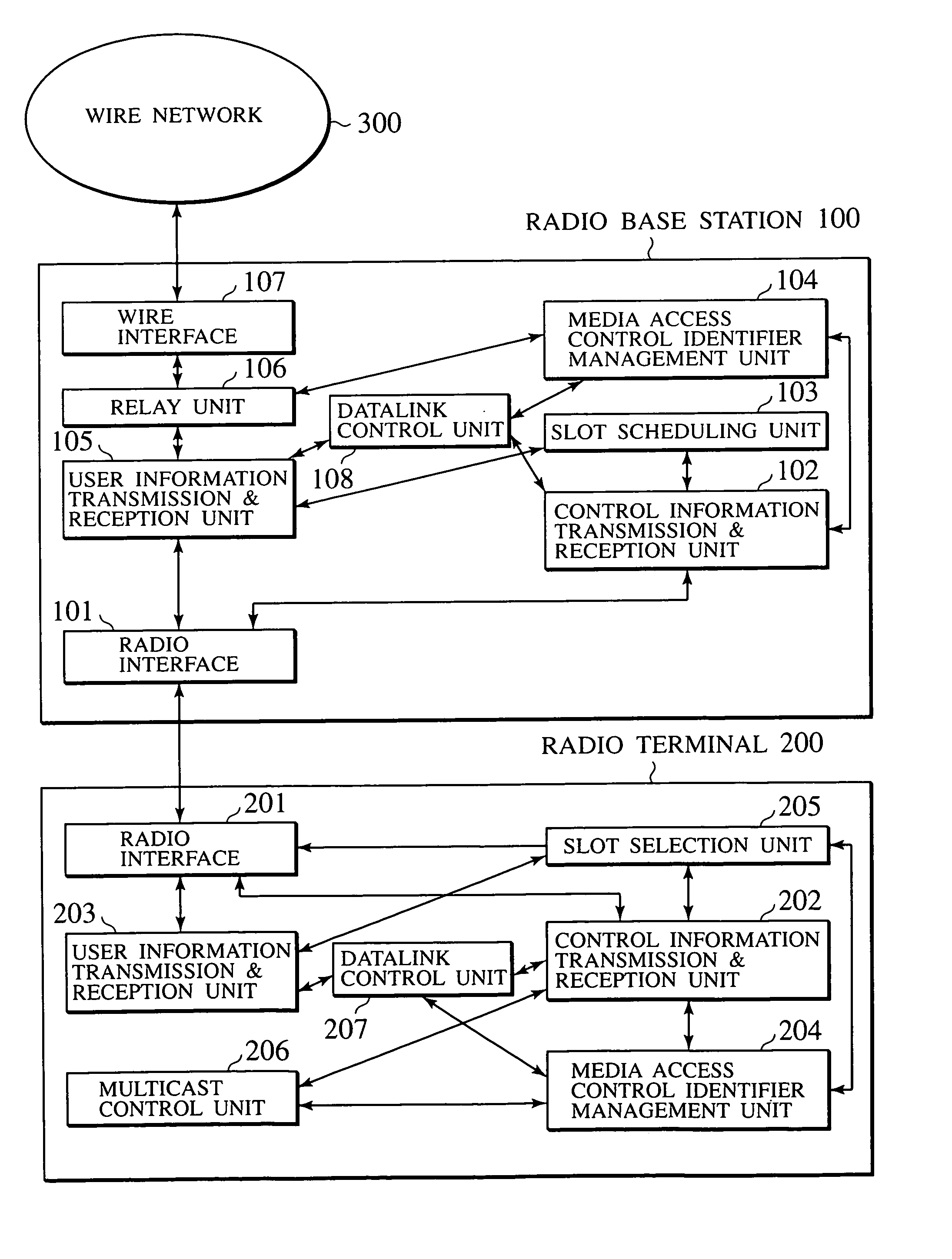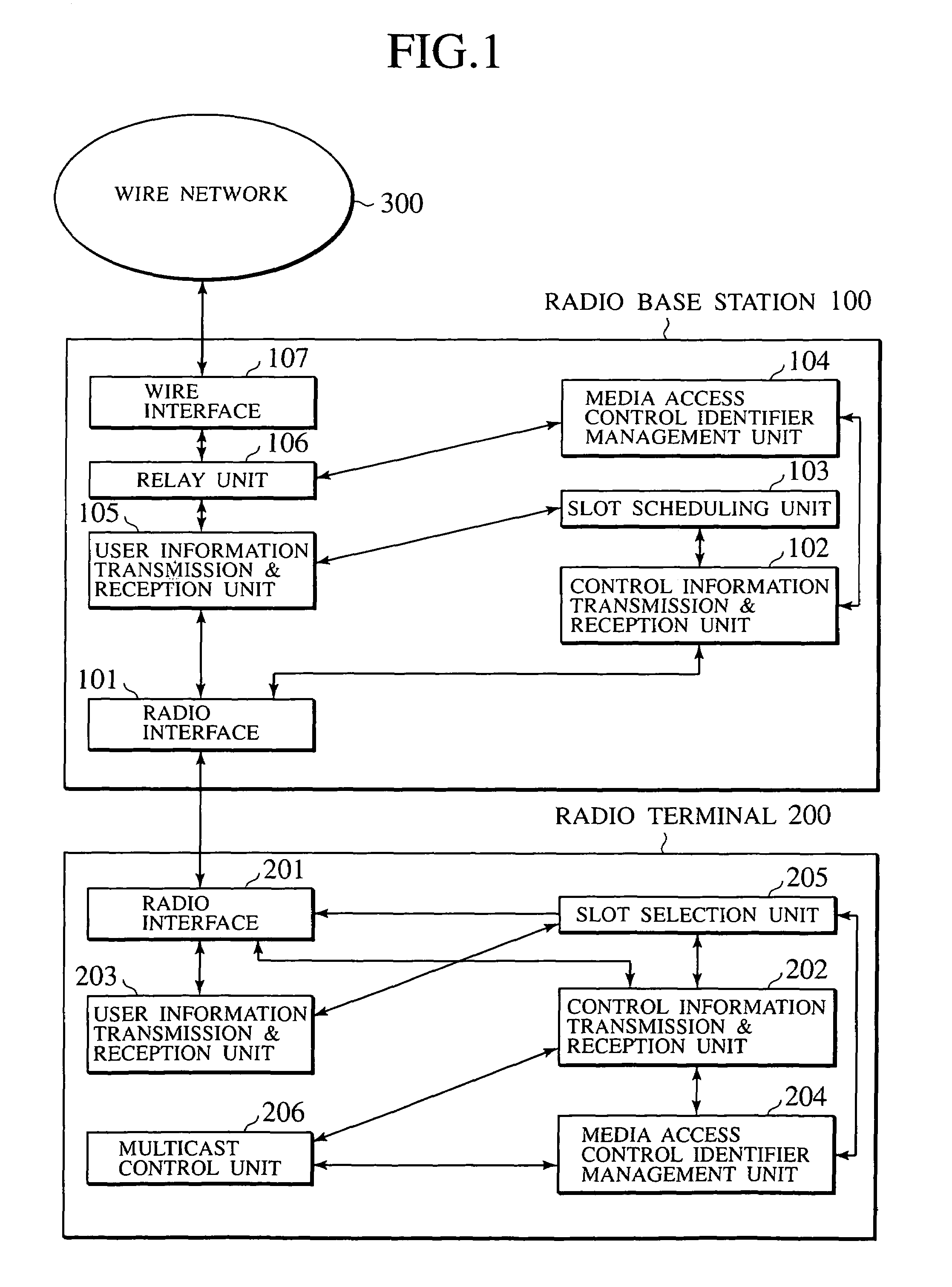Radio communication system using point-to-point and point-to-multipoint user information communications
a radio communication system and information communication technology, applied in multiplex communication, wireless commuication services, broadcast with distribution, etc., can solve the problems of power supply shortage, waste of processing resources, and inability to carry out point-to-multipoint user information communications
- Summary
- Abstract
- Description
- Claims
- Application Information
AI Technical Summary
Benefits of technology
Problems solved by technology
Method used
Image
Examples
first embodiment
[0082]Referring now to FIG. 1 to FIG. 12, a radio communication system according to the present invention will be described in detail.
[0083]FIG. 1 shows an exemplary network configuration including a radio base station 100 and a radio terminal 200 according to the first embodiment.
[0084]As shown in FIG. 1, this network comprises a wire network 300, a radio base station 100 connected with the wire network 300, and a radio terminal 200 which is located within a cell of the radio base station 100. Note that FIG. 1 only shows one radio base station 100 but it is possible to have plural radio base stations in general. Note also that the radio terminal 200 is capable of carrying out communications with the other radio terminals through one radio base station or a plurality of radio base stations.
[0085]The radio base station 100 has a radio interface 101, a control information transmission and reception unit 102, a slot scheduling unit 103, a media access control identifier management unit...
fifth embodiment
[0141]Note that, as shown in FIG. 6, the set up of the datalink connection and the datalink control connection associated with it can be omitted in the case where the uplink ARQ information with respect to the downlink multicast user information transmission is unnecessary. However, the datalink connection identifier can be utilized without requiring an explicit set up of the datalink connection and the datalink control connection. These points also apply to the other procedure for the broadcast type multicast described below. An example in which the datalink connection identifier is utilized for the purpose of multiplexing the user information will be described later as the
[0142]The second form is a form in which the point-to-multipoint traffic is unidirectional from the radio base station 100 to a plurality of radio terminals, but there is a need to return the user information and / or the ARQ information in response to it from the radio terminal 200. This form will be referred to a...
second embodiment
[0183]Referring now to FIG. 13 to FIG. 16, a radio communication system according to the present invention will be described in detail.
[0184]The second embodiment is similar to the first embodiment as far as the handling of the point-to-point is concerned, but a way of realizing the point-to-multipoint is different. In the following, the differences from the first embodiment will be mainly described.
[0185]The media access control identifier management unit 104 of the radio base station 100 and the media access control identifier management unit 204 of the radio terminal 200 are similar to those of FIG. 3 and FIG. 4, but unlike the first embodiment, the correspondence between the multicast media access control identifier and the information type identifier is not notified to all the radio terminals located in that area. Namely, there is provided an information regarding which radio terminals are actually requiring the information on the correspondence, and the information on the medi...
PUM
 Login to View More
Login to View More Abstract
Description
Claims
Application Information
 Login to View More
Login to View More - R&D
- Intellectual Property
- Life Sciences
- Materials
- Tech Scout
- Unparalleled Data Quality
- Higher Quality Content
- 60% Fewer Hallucinations
Browse by: Latest US Patents, China's latest patents, Technical Efficacy Thesaurus, Application Domain, Technology Topic, Popular Technical Reports.
© 2025 PatSnap. All rights reserved.Legal|Privacy policy|Modern Slavery Act Transparency Statement|Sitemap|About US| Contact US: help@patsnap.com



